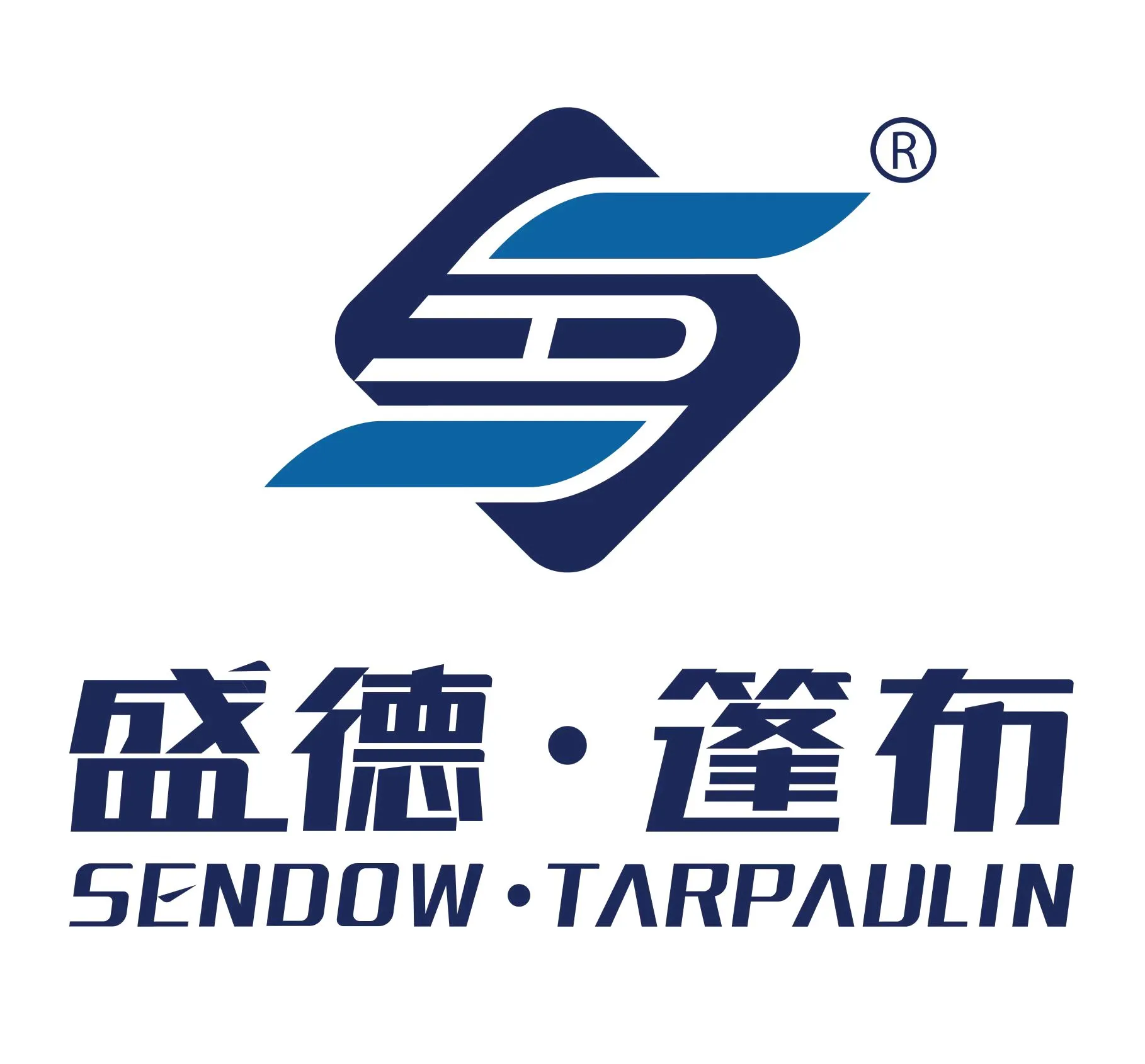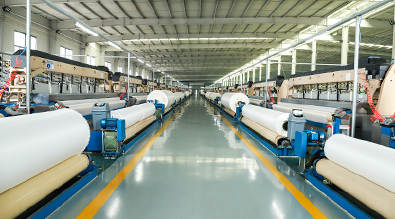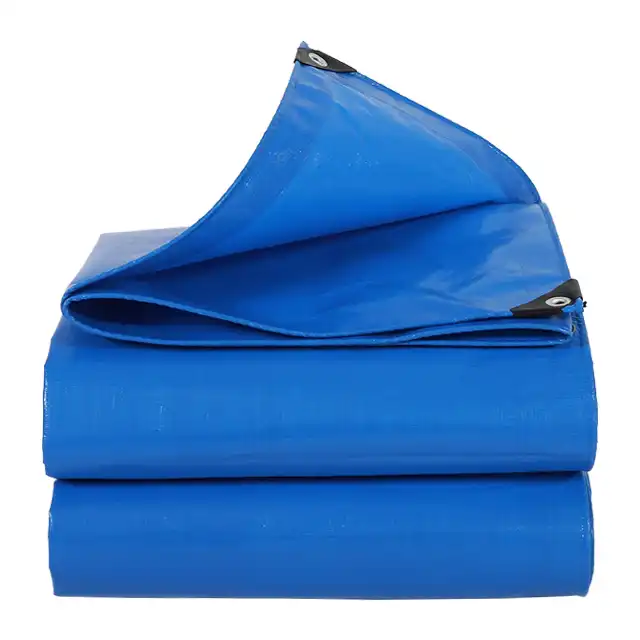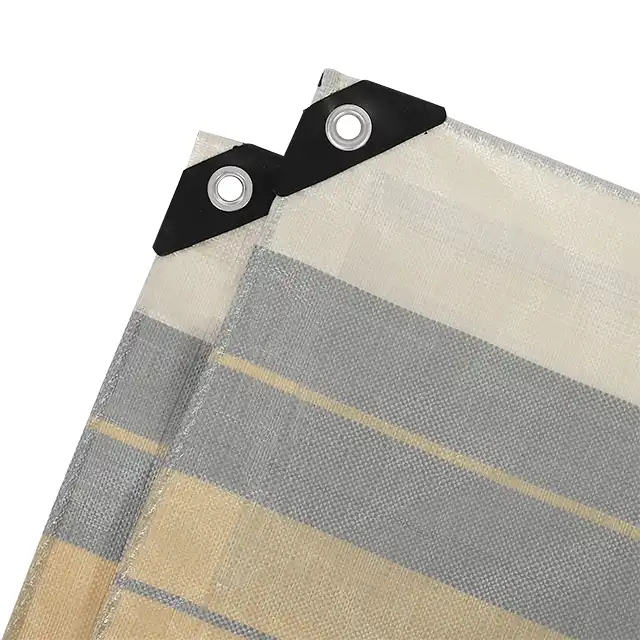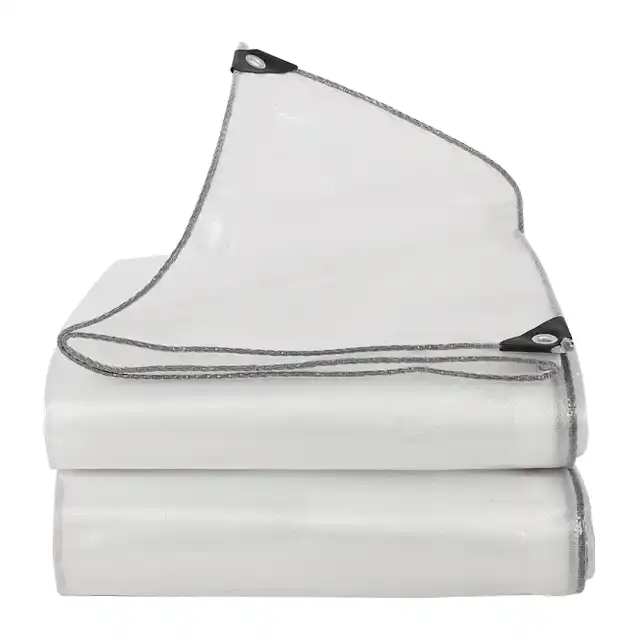The Growing Demand for Weather-Resistant Roof Tarps
In recent years, the market for weather-resistant roof tarps has seen unprecedented growth across various sectors including construction, emergency response, and property maintenance. This surge in demand stems from increasing climate unpredictability, with severe weather events becoming more frequent and intense worldwide. Roof tarps have evolved from simple temporary coverings to sophisticated protective solutions engineered with advanced materials and manufacturing techniques. Property owners, contractors, and disaster relief organizations increasingly recognize the value of high-quality, durable roof tarps that can withstand harsh environmental conditions while providing reliable protection for structures and assets underneath.
The Evolution of Modern Roof Tarp Technology

Advancements in Weather-Resistant Materials
The roof tarp industry has witnessed remarkable advancements in material science over the past decade. Modern roof tarps are engineered using high-density polyethylene (HDPE) woven fabrics with low-density polyethylene (LDPE) coating on both sides, creating a superior barrier against moisture and environmental damage. These materials represent a significant improvement over traditional canvas or basic plastic coverings. Today's premium roof tarps, like those manufactured by industry leaders such as Sendow Tarpaulin, incorporate specialized UV stabilizers that prevent degradation from sunlight exposure. This technological breakthrough extends the serviceable life of roof tarps from mere months to several years, even in harsh climates. The incorporation of tear-resistant weaving patterns allows these tarps to maintain their protective capabilities even after exposure to high winds, heavy rainfall, and temperature fluctuations that would quickly degrade conventional coverings. With weight options ranging from 65gsm to 280gsm, modern roof tarps can be customized to specific applications based on the expected duration of use and environmental challenges they will face.
Innovative Design Features for Enhanced Performance
Contemporary roof tarps incorporate design innovations that significantly enhance their performance and versatility. Engineers have developed reinforced edge technology with double-stitched hems and heat-sealed seams that dramatically increase tensile strength at critical stress points. This innovation prevents the common failure points experienced with older tarp designs during wind events. Strategically positioned grommets and attachment points enable more secure installation methods, reducing the likelihood of tarp displacement during storms. Advanced roof tarps now feature anti-pooling designs that prevent water accumulation, addressing one of the most common causes of tarp failure and potential structural damage. Industry pioneers have also introduced specialized corner reinforcements that distribute tension more effectively across the entire tarp surface. These roof tarps demonstrate remarkable arctic flexibility, maintaining their protective properties even in sub-freezing temperatures without becoming brittle or cracking. The combination of these design elements results in roof tarps that not only provide immediate protection but maintain their structural integrity through multiple seasons and weather events.
Customization Options for Specific Climate Challenges
The roof tarp market has evolved to address the specific challenges presented by diverse climate conditions worldwide. Manufacturers now offer specialized formulations designed for extreme heat resistance in tropical and desert environments, where traditional tarps would quickly degrade. For regions experiencing monsoon seasons or prolonged rainfall, roof tarps with enhanced water-shedding capability and reinforced waterproofing (100% waterproof guarantee) are available, featuring increased coating thickness and specialized weaving patterns that prevent water penetration even under pressure. Cold-weather formulations incorporate anti-freezing properties that maintain flexibility and prevent cracking in sub-zero temperatures, extending the usable season for construction projects in northern climates. Advanced manufacturing processes allow for custom sizing, with some manufacturers capable of producing seamless tarps up to 5.1 meters wide, eliminating vulnerability at seam points. Color customization goes beyond aesthetics, with reflective options for heat management in sunny climates and darker options for heat retention in colder regions. These climate-specific roof tarps represent a significant advancement over the one-size-fits-all approach of previous generations, providing optimized protection tailored to the exact environmental challenges of each application.
Applications Driving Increased Roof Tarp Adoption
Emergency Response and Disaster Recovery Solutions
The frequency and severity of natural disasters have dramatically increased the demand for high-performance roof tarps in emergency response scenarios. When hurricanes, tornadoes, or severe storms damage residential and commercial roofing, immediate protective measures become essential to prevent further structural damage and interior water infiltration. Disaster relief organizations now maintain substantial inventories of premium roof tarps as a critical component of their rapid response strategies. These specialized roof tarps feature accelerated deployment designs with reinforced attachment points that enable faster, more secure installation on damaged structures, even by volunteers with minimal training. The durability factor is paramount in these applications, as roof tarps must maintain their integrity for extended periods while permanent repairs are planned and executed. Organizations like FEMA, Red Cross, and international relief agencies increasingly specify tear-resistant, heavy-duty roof tarps (typically 180gsm or heavier) that can withstand post-disaster conditions including debris impact and subsequent weather events. The economic calculus is compelling: investing in quality roof tarps immediately following a disaster prevents exponentially higher costs from secondary damage to building interiors, electrical systems, and personal property. This critical application continues to drive innovation in the roof tarp industry, pushing manufacturers to develop products that offer enhanced protection while remaining logistically practical for mass deployment in emergency situations.
Construction and Renovation Project Protection
The construction industry has become one of the largest consumers of advanced roof tarps, utilizing them throughout various stages of new construction and renovation projects. During framing and pre-roofing phases, contractors deploy specialized roof tarps to protect exposed structural elements and interior spaces from moisture damage that could compromise building integrity or lead to mold issues. These construction-grade roof tarps feature enhanced puncture resistance to withstand the rigors of active work environments where tools, materials, and worker movement create constant abrasion risks. Project managers increasingly recognize that premium roof tarps represent a minor investment compared to the potential costs of weather-related construction delays or material replacement. In renovation scenarios, particularly when working on occupied buildings, roof tarps provide essential protection for both the structure and occupants' belongings during periods when the original roofing is compromised. The specific requirements for construction applications have driven manufacturers to develop tarps with customized attributes including reinforced walking surfaces, flame-retardant treatments to meet safety codes, and specialized attachment methods compatible with different building materials and architectural designs. These roof tarps must balance durability with practical handling characteristics, as they are frequently repositioned throughout the construction process. The construction sector's embrace of high-performance roof tarps has contributed significantly to the overall market expansion while driving continuous product improvement.
Seasonal Property Protection and Maintenance
Property owners and facility managers increasingly incorporate roof tarps into their preventative maintenance strategies rather than merely as reactive solutions. In regions with pronounced seasonal weather patterns, scheduled deployment of protective roof tarps has become a standard practice for extending the life of roofing systems and preventing minor issues from escalating into major problems. Vacation homes and seasonal properties benefit particularly from this approach, with owners installing premium roof tarps during off-season periods to protect their investments from accumulated snow loads, hurricane-force winds, or prolonged UV exposure depending on the location. Facility managers for commercial properties utilize scheduled roof tarp installation to create additional protection layers over aging roofing systems while budgeting for eventual replacement. The economic calculation is straightforward: a quality roof tarp costing a fraction of a new roof can extend the functional life of an existing system by multiple years when properly installed and maintained. These applications typically utilize middle-duty PE tarpaulins (100gsm-180gsm) with appropriate UV treatment (1%-7%) based on exposure conditions. The specific demands of this growing application segment have prompted manufacturers to develop products that combine long-term durability with aesthetic considerations, as these tarps remain in place for extended periods in visible locations. Color options beyond the traditional blue have expanded, allowing property owners to select options that blend with existing architecture while still providing superior protection against leaks and structural damage.
Technological Innovations Enhancing Roof Tarp Performance
Advanced UV Protection and Weather Resistance
Revolutionary advancements in polymer science have transformed the weather resistance capabilities of modern roof tarps. Leading manufacturers now incorporate specialized UV inhibitors directly into the polyethylene formulation rather than merely applying surface treatments. This approach provides significantly improved protection against the degradation effects of ultraviolet radiation, which traditionally represented the primary failure point for outdoor coverings. Premium roof tarps now maintain their structural integrity and protective properties even after extended exposure to intense sunlight conditions that would quickly degrade conventional materials. The most advanced products in the market feature UV protection ratings of up to 7%, representing thousands of hours of sun exposure without significant deterioration. These technological improvements directly translate to longer service life and consistent performance throughout the deployment period. Additionally, manufacturers have developed enhanced resistance to other weathering factors including acid rain, industrial pollutants, and biological contaminants like mold and mildew. The combination of these protective elements creates roof tarps capable of maintaining their water-resistant properties through multiple seasons of exposure to diverse environmental challenges. This level of weather resistance has fundamentally changed the economics of temporary roofing solutions, as premium products now provide reliable protection measured in years rather than months, shifting the perception of roof tarps from emergency stopgaps to legitimate extended protective systems.
Manufacturing Techniques for Enhanced Durability
The durability revolution in roof tarp technology stems largely from manufacturing innovations that have transformed production capabilities. Advanced facilities now employ high-precision extrusion systems that create remarkably consistent polyethylene filaments with optimized thickness and tensile properties. These precisely engineered yarns (ranging from 400D to 2500D) form the foundation for tightly woven base fabrics with significantly improved tear resistance compared to conventional materials. The coating application process has similarly evolved, with computer-controlled lamination systems ensuring perfect adhesion and consistent thickness across the entire surface area of the tarp. This eliminates the weak points and inconsistencies common in older manufacturing methods. Leading producers have invested in specialized heat-sealing technology that creates virtually indestructible seams, eliminating the traditional vulnerability at connection points. The most sophisticated production facilities now integrate real-time quality monitoring systems that detect and correct minute variations throughout the manufacturing process, ensuring unprecedented consistency in the final product. These manufacturing advances enable producers like Sendow Tarpaulin to offer roof tarps with guaranteed performance specifications, backed by standardized testing protocols that verify waterproofing capability, tear resistance, and tensile strength. The combination of these production technologies results in roof tarps that maintain their protective integrity even under extreme stress conditions including high winds, heavy snow loads, and abrasive debris contact that would quickly compromise lesser products.
Environmental Sustainability Improvements
The roof tarp industry has responded to growing environmental concerns with significant sustainability improvements in both materials and manufacturing processes. Progressive manufacturers have developed polyethylene formulations that maintain performance standards while reducing overall petroleum dependency through partial incorporation of recycled content and bio-based additives. These environmentally enhanced materials demonstrate comparable performance to traditional formulations while offering improved end-of-life recyclability. Advanced production facilities have implemented closed-loop manufacturing systems that capture and reuse process water, dramatically reducing consumption compared to conventional manufacturing methods. Energy efficiency improvements, including heat recovery systems and precision control technologies, have significantly reduced the carbon footprint associated with roof tarp production. Leading companies have also introduced take-back programs for used roof tarps, establishing recycling channels that prevent these materials from entering landfills at the end of their service life. The environmental benefits extend beyond manufacturing considerations to include performance characteristics that contribute to sustainability goals. By providing more effective protection against weather damage, quality roof tarps reduce the need for emergency repairs and premature replacement of building materials, conserving resources and reducing waste generation. The extended service life of premium products means fewer replacements over time, further reducing material consumption and associated environmental impacts. These sustainability improvements represent a significant evolution in an industry traditionally associated with petroleum-based products, aligning roof tarp technology with broader environmental responsibility objectives.
Conclusion
The dramatic increase in demand for weather-resistant roof tarps reflects their evolution from simple coverings to engineered protective solutions addressing critical needs across multiple sectors. As climate unpredictability continues to challenge property owners worldwide, these advanced protective solutions provide essential security against increasingly severe weather events. When selecting roof tarps for any application, quality, durability and proper sizing are paramount considerations that directly impact performance and longevity.
For inquiries about premium-quality, weather-resistant roof tarps manufactured to the highest industry standards, contact Linyi Shengde Plastic Co., Ltd, a trusted industry leader with two decades of manufacturing excellence. Our expert team can help you select the perfect solution for your specific requirements. Reach us at info@shengdetarp.com to discuss your needs.
References
1. Johnson, R. M., & Williams, K. T. (2023). "Climate Change Impacts on Building Protection Strategies: The Rising Importance of Weather-Resistant Materials." Journal of Construction Engineering, 45(3), 112-128.
2. Zhang, H., & Peterson, L. (2022). "Advancements in Polymer Science for Outdoor Applications: A Focus on Roof Protection Systems." Materials Science and Applications, 18(2), 203-217.
3. Martinez, C., & Thompson, S. (2023). "Emergency Response Protocols for Natural Disasters: The Critical Role of Temporary Roofing Solutions." Disaster Management Review, 29(4), 376-391.
4. Anderson, P. R., et al. (2024). "Comparative Analysis of Weather-Resistant Coverings in Extreme Climate Conditions." International Journal of Material Performance, 12(1), 45-61.
5. Chen, W., & Richardson, D. (2023). "Economic Impact Assessment of Preventative Weather Protection in Construction Projects." Construction Economics Journal, 34(2), 189-203.
6. Singh, A., & Nakamura, T. (2024). "Sustainability Improvements in Protective Construction Materials: Case Studies in the Tarpaulin Industry." Environmental Technology & Innovation, 19(3), 267-282.
